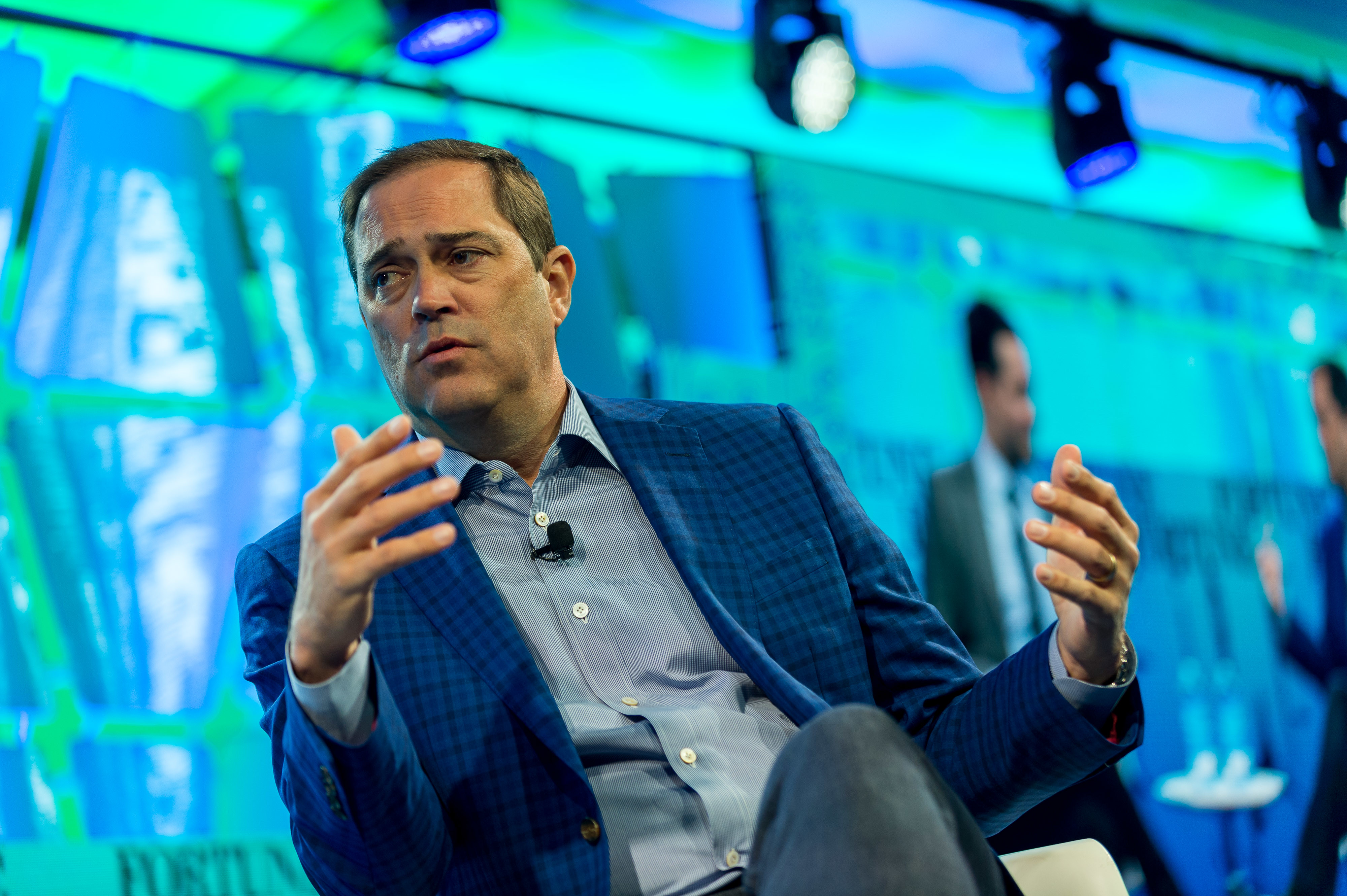 INFRA
INFRA
 INFRA
INFRA
 INFRA
INFRA
Shares of Cisco Systems Inc. traded higher in extended trading today thanks to better-than-expected earnings and revenue during the company’s fiscal first quarter as well as full-year guidance.
Cisco reported quarterly earnings before certain costs such as stock compensation of 86 cents per share on revenue of $13.63 billion, up 6% from a year earlier. The results were good, surpassing analysts’ expectations of an 82 cents per share profit on sales of $13.31 billion. All in all, Cisco posted a net profit of $2.67 billion, down from $2.98 billion one year earlier and below the $2.84 billion forecast.
Cisco’s stock gained almost 4% in after-hours trading on the back of the report, erasing a 1% drop earlier in the day.
Cisco Chairman and Chief Executive Chuck Robbins (pictured) insisted that Cisco’s fiscal 2023 was off to a good start, with the company delivering the largest quarterly revenue and second-highest quarterly adjusted earnings per share in its history. “These results demonstrate the relevance of our strategy, our differentiated innovation and our unique position to help our customers become more resilient,” he added.
In a conference call with analysts, Robbins revealed that the company is “right-sizing certain businesses,” which means reducing its headcount in some areas. He explained that the company will provide more details on the cutbacks to employees on Thursday.
In addition, Cisco is also planning to close some unused or underutilized office facilities, he said. By the end of the current year, Robbins said the company’s headcount will stay about flat from the start of the year. Robbins didn’t specify how many employees might lose their jobs from this restructuring. But he said the charges related to it would be booked over the next few quarters, including some costs of downsizing its office space as more of its staff adopts a hybrid model, working at home some of the time.
The CEO added that Cisco has managed to ease many of the supply chain constraints it has faced in recent quarters. Moreover, he said, its investments in cloud and targeted price hikes have helped improve its business overall, attracting new customers even amid a slowing economy.
Indeed, Cisco did grow its revenue overall and that was reflected in its top business segment — Secure, Agile Networks — which includes data center networking switches. It delivered revenue of $6.68 billion, up 12% from a year earlier.
However, the company’s other business units struggled. Internet for the Future, which encompasses sales of routed optical networking hardware, saw revenue fall by 5% to $1.3 billion. The Collaboration business, which includes Webex, added $1.1 billion in revenue, down 2% from a year ago.
Holger Mueller of Constellation Research Inc. said Cisco has gotten off to a good start to its new fiscal year. Though its growth was somewhat pedestrian, it’s still good progress given the current economic conditions, he said. However, he pointed out that much of the growth came from Europe, Africa and the Middle East, whereas growth stalled in the Americas and Asia Pacific regions.
“The other challenge for Ciscos is that all of its growth came from its core networking business, while its larger two diversification businesses are shrinking,” Mueller said.
Pund-IT Inc. analyst Charles King said there are good reasons to be optimistic about Cisco’s prospects. He noted that, like other business-focused IT infrastructure vendors, such as Dell Technologies Inc. and IBM Corp., Cisco has suffered less than those companies that are focused on consumer markets.
“With supply chain issues now easing, Cisco should be able to reduce its order backlog and help customers get back on track,” King added. “The news isn’t entirely positive for all Cisco employees. But since global economic uncertainties remain, the company is wise to cut costs where it can, including reducing headcounts and offloading underused commercial real estate. However, Cisco is likely to emerge on the other side as a better balanced and much stronger company than it is today.”
During the quarter, Cisco announced a fair number of improvements to Webex, enhancing the service with new capabilities to enable hybrid work. It also integrated its collaboration, cloud contact center and cloud communications offerings under a single banner to aid customer experience teams.
The company also introduced a powerful new processor, the SiliconOne G100, which sites at the heart of its recently launched 8111-32EH router and Nexus 9000 and 8000 network switches.
Looking to the second quarter, Cisco said it’s forecasting revenue growth of between 4.5% and 6.5%, with earnings of between 84 and 86 cents per share. That’s more or less in line with Wall Street’s targets, which call for revenue growth of just over 5% and earnings of 85 cents per share. Cisco said it’s also guiding for revenue growth of 4.5% to 6.5% for the full year, with expected earnings of between $3.51 and $3.58.
Cisco Chief Financial Officer Scott Herren said the company’s annualized recurring revenue increased to more than $23 billion, with product ARR rising 12%. “This, together with our significant backlog, strong RPO and easing supply situation provides us with great visibility and predictability and supports our increased full year guidance,” he said.
Support our mission to keep content open and free by engaging with theCUBE community. Join theCUBE’s Alumni Trust Network, where technology leaders connect, share intelligence and create opportunities.
Founded by tech visionaries John Furrier and Dave Vellante, SiliconANGLE Media has built a dynamic ecosystem of industry-leading digital media brands that reach 15+ million elite tech professionals. Our new proprietary theCUBE AI Video Cloud is breaking ground in audience interaction, leveraging theCUBEai.com neural network to help technology companies make data-driven decisions and stay at the forefront of industry conversations.